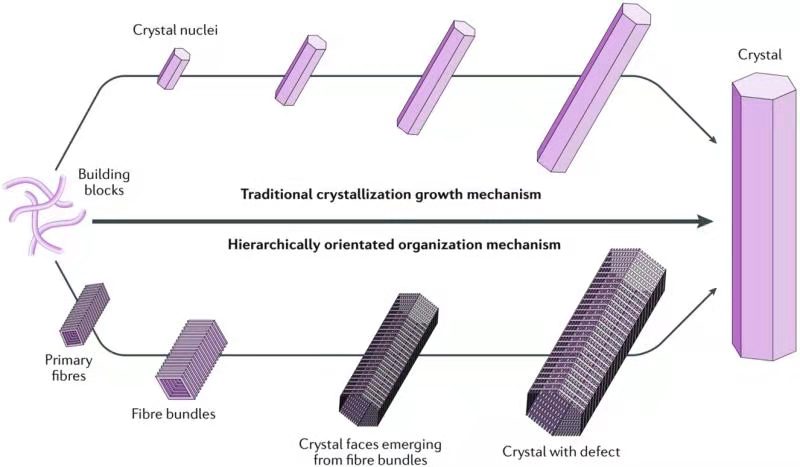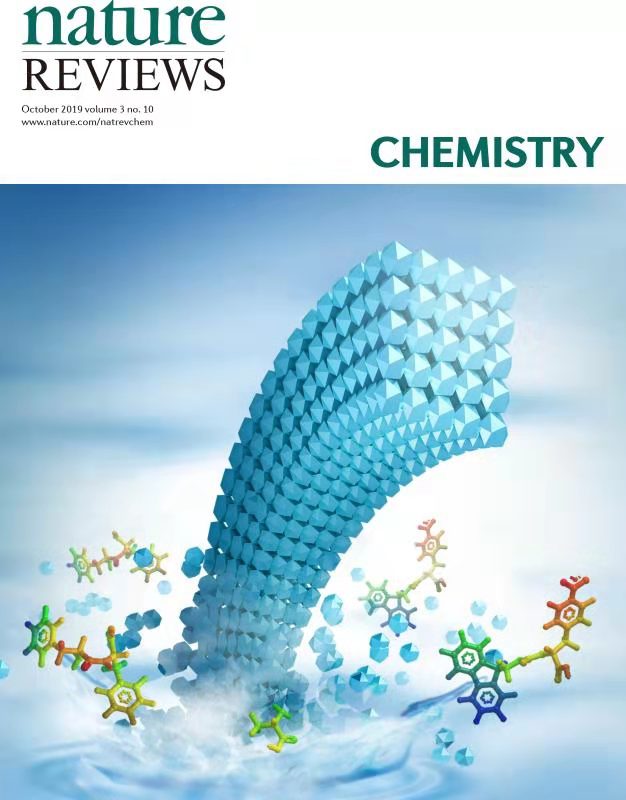A new mechanism for peptide supramolecular assembly and crystallization, such as Process Engineering
2023-10-19 21:08:55
[ Instrument Network Instrument Development ] Recently, the Institute of Process Engineering of the Chinese Academy of Sciences and the Tel Aviv University of Israel and the Institute of Chemistry of the Chinese Academy of Sciences have proposed a theoretical model of "gradient orientation organization" of peptide supramolecular crystals, which is different from the traditional super-based Ostwald ripening. Molecular assembly mechanism and crystal growth theory provide theoretical guidance for the design and development of new supramolecular functional materials. Related work is published in Nature Reviews Chemistry.

Long-range and orderly hierarchical self-assembly and crystallization are common in nature, and play an important role in the structural regulation of organisms and the physiological functions such as protein transport, signal transduction and cell differentiation. The research on the self-assembly and crystallization of biomolecules not only helps people to understand the formation and function of material structure at the molecular level, but also provides new ideas for the development of new complex biological materials. However, how to adjust the thermodynamics and kinetics of the assembly process, achieve the regulation of simple biomolecule self-assembly nucleation-growth, and build hierarchical ordered assemblies and crystals is a long-term challenge.
Yan Xuehai, a researcher at the Institute of Process Engineering, has long been committed to the research on the self-assembly of biomolecules (especially oligopeptides) and their physicochemical mechanisms, and has made a series of progress in the molecular mechanism and laws of oligopeptide self-assembly. They controlled the self-assembly of oligopeptides and photoactive molecules by changing the molecular structure of oligopeptides, and achieved controllable construction of the structure and function of the assembly (J. Am. Chem. Soc. 2017, 139, 1921-1927; J. Am. Chem. Soc. 2018, 140, 10794-10802; Angew. Chem. Int. Ed. 2018, 57, 17084–17088; Angew. Chem. Int. Ed. 2019, 58, 2000-2004); In the initial stage of self-assembly nucleation, in-depth study was carried out, and the decisive role of trace solvent in oligopeptide self-assembly process was discovered. Further, the introduction of ionic liquid slowed the rate of oligopeptide self-assembly, and found that in the early stage of oligopeptide self-assembly nucleation, The presence of trace water plays a key role in the formation of stable oligopeptide molecular clusters, nucleation initiation and growth (ACS Nano 2016, 10, 2138-2143; Small 2017, 13, 1702175; Angew. Chem. Int. Ed. 2019, 58, 5872-5876).
Based on the preliminary basis, the researchers found the general rule of peptide supramolecular crystal formation through the statistical analysis of the multi-scale hierarchical structure phenomenon frequently appearing in the peptide supramolecular assembly process, and proposed the crystallization theoretical model of “gradient orientation organizationâ€. The model is also applicable to other small organic molecules, and is expected to be widely used in the self-assembly of crystals and accurate construction of materials.
The co-authors of the review article are Yan Xuehai, Ehud Gazit and Li Junbai. The first authors are Yuan Chengqian and Jiwei, and the Process Engineering Institute is the first completion unit. Relevant work has been supported by the National Natural Science Foundation of China and the Chinese Academy of Sciences.

Embroidery,Shiny Sequin Lace Fabric,Cotton Twill Fabric,Plaid Embroidery Eyelt Fabric
Shaoxing MingFang Textile Co., Ltd , https://www.printings-fabric.com